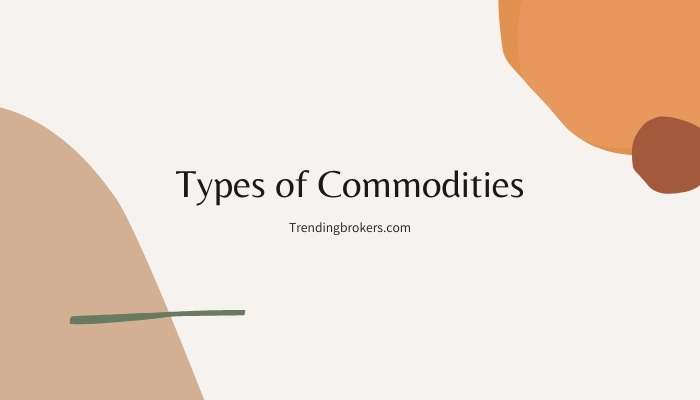
Commodities are the most basic component of the global Economy, upon which most other goods are dependent. They come in two differentiated categories. ‘Hard’ commodities are natural resources that have to be mined or extracted. These embrace energies like oil and natural gas, as well as metals like aluminum and gold. ‘Soft’ commodities, conversely, are agricultural products like livestock and crops. We will be looking at the most traded commodities.
Commodity markets are popular with traders since prices may be quite volatile. There are frequent opportunities to profit by going long or short. Factors impacting pricing embrace weather patterns, consumer trends, government policies, infrastructure, reserve levels, economic performance, and currency valuations.
Most traded commodities: how they work
It is on a futures market that commodities are traded. Produces and consumers bargain for payment. Such contracts also tend to set a future date on which the goods may be delivered.
The majority of commodities trade on commodity exchanges. These permit commodities to be bought and sold similar to stocks. They make a standard contract for when a trade will take place. There’s resultantly a fixed price and future delivery date for the goods being traded.
Which commodities are traded the most? Or What types of commodities are traded? Or What are the top 10 commodities?
The top ten most traded commodities globally are
- Brent crude(oil)
Crude oil can be refined into products including diesel, petrol, and lubricants, besides many petrochemicals that may be used to make plastics. Brent crude is a major oil type benchmarking global prices, besides West Texas Intermediate (WTI). It is a high-quality sweet light oil, implying that it has low sulfur content and density.
Drilled from oil fields in the North Sea’s Brent, Forties, Oseberg, Ekofisk fields, often British and Norwegian coasts. Coastal proximity to internal shipping makes for excellent transport systems ;
- Steel
Steel, an iron and carbon alloy that frequently includes elements like manganese, nickel, chromium, tungsten, and nickel. Steel is suitable for industrial applications.
Steel prices have always been fairly well correlated with global economic performance, unsurprising since it is one of the most traded commodities. There’s a general rise and fall accompanying economic output.
Nonetheless, as an alloy, the price is contingent upon the cost of constituent products and associated shipping costs.
There being no universally agreed standard for the alloy, there are diverse futures contracts for steel. With ABinvesting, you may trade steel indirectly the speculation on constituent commodities, specifically iron ore ;
- WTI crude (oil)
WTI or West Texas Intermediate crude is another high-quality sweet light oil, with an even lower sulphur content and density relative to Brent crude.
WTI oil prices have always been US consumption dependent. Some of the consumer regions are landlocked, making for transportation challenges and consequently complex pricing. This has been corrected to some extent with the reversal of the ‘Seaway Pipeline’ to take oil from the consumer region to a port on the Gulf of Mexico, resolving logistical issues with this most traded commodity ;
- Soybeans
Soybeans in the US, or soybeans elsewhere, are a vital commodity, rich in protein and relatively inexpensive to produce. They Are used to make a diversity of agricultural and food products, including soybean meals and soybean oil. We are familiar with tofu and soy milk.
The demand for animal feed, biodiesel, dairy, and meat substitutes, besides supply affecting factors, impact soybean prices ;
- Iron ore
The rocks and minerals from which iron may be extracted are iron ores. The diversity of iron ores is used to produce pig iron, which may be used for cast iron production, catalysts, and magnets for diverse chemical and industrial uses.
Prices have been vastly impacted by the massive Chinese consumption the past two decades, this being one of the most traded commodities;
- Corn
Corn, or maize, is a vital soft commodity. Corn is used primarily for animal feed production, besides making corn syrup, ethanol, and starch. There are diverse varieties of corn - mainly flint, dent, popcorn, pod, sweet corn, and flour.
The impactive factors are similar to those found in the case of soybean prices. Additionally, a vital factor that impacts soybean prices is US subsidies ;
- Gold
Gold, the precious metal, is used both for investment purposes as well as for jewelry production. Anti-corrosion properties and the fact that gold is a good conductor of electricity make it suitable for diverse virtual industrial applications.
Gold price frequently has an inverse relationship with the US Dollar’s value. It is easy to see why gold is the most traded commodity;
- Copper
Copper is avital base metal given that it is a great electricity conductor. Additionally, it is corrosion-resistant, even weather-proof. It is mainly used in the manufacture of electrical wires, roof tiles, pipes, and industrial machinery. Nonetheless, it is also in alloy production, namely bronze and brass.
Given the diverse industrial applications, copper’s price may fluctuate with the Economy. ;
- Aluminum
Aluminum is very light and corrosion-resistant. It is frequently combined with other elements, like zinc, copper, magnesium, making for strong, light-alloy formation. Therefore, aluminum and its alloys have commercial applications. These include construction and manufacturing.
Chinese consumption remains a big factor in aluminum pricing. Hardly surprising, since aluminum is one of the most traded commodities ;
- Silver
Another precious metal, silver, can be said to be close to equally divided between industrial applications and jewelry manufacture. The use of silver in solar panels and the photographic film is well-known. Investors and jewelry consumers are also price drivers.
Conclusion
The price of the chosen market and the underlying asset have to be researched in-depth prior to commodity trading. There is a diversity of factors affecting each one of the most traded commodities. InvestBy can guide you regarding your trading plans’ compatibility with your commodity market.



























